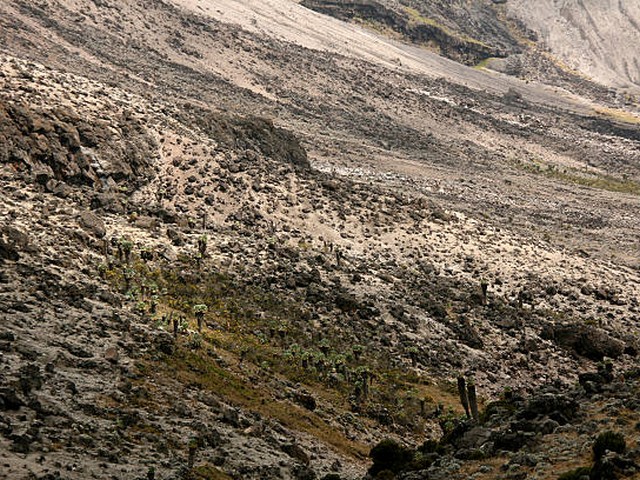How To Handle Kilimanjaro Trekking Emergencies: A Guide by KCTE
Introduction: Embracing Adventure with Preparedness
Climbing Mount Kilimanjaro is a dream for many adventurers worldwide. Known as the rooftop of Africa, this majestic mountain offers breathtaking views and the satisfaction of conquering one of the highest peaks in the world. However, embarking on this unforgettable journey isn’t without its challenges. At Kilimanjaro Centre for Trekking and Ecotourism (KCTE), we understand that preparation is key to not only enjoying your trek but also ensuring you handle any emergencies effectively. In this detailed guide, we will explore essential strategies to handle unforeseen situations during your Kilimanjaro trek, ensuring that your adventure remains safe and inspirational.
Preparing for the Climb: Knowledge & Fitness
Knowing What You’re Up Against
Before setting foot on Kilimanjaro, familiarize yourself with the common challenges and how to deal with them. Altitude sickness, dehydration, and minor injuries are some frequent issues trekkers face. Learning about these in advance can make a significant difference.
Physical Preparation is Crucial
A successful ascent requires good physical condition. Engage in regular cardio, strength training, and hikes to emulate climbing conditions. Remember, the healthier and fitter you are, the better your body can handle high altitudes and the less likely you’ll face critical emergencies.
During the Trek: Vigilance and Teamwork
Stay Alert and Communicate
Always be aware of how you feel and communicate openly with your guide. Our guides at KCTE are trained to recognize signs of distress and can make crucial decisions to ensure everyone’s safety.
The Importance of a Well-Trained Guide
A knowledgeable guide can be the difference between a minor hiccup and a serious emergency. Our KCTE guides are not only experts in navigating the terrain but are also equipped with first aid training and emergency response tactics.
Common Kilimanjaro Trekking Emergencies and How to Handle Them
Dealing with Altitude Sickness
Altitude sickness can be a major concern. Recognize the symptoms early: headaches, nausea, dizziness, and fatigue. If symptoms appear, inform your guide immediately. The best remedy is often to descend to a lower altitude or rest until symptoms subside.
Injury Prevention and Response
Sprains or falls can happen. Always wear appropriate footwear and use trekking poles for stability. If an injury occurs, your guide will assess and provide first aid. More severe cases may require evacuation—something KCTE is fully prepared to coordinate.
Weather Woes on Kilimanjaro
Weather on Mount Kilimanjaro can be unpredictable. Prepare for all conditions by packing properly: waterproof gear, layers for cold, and sun protection. Listen to your guide if weather conditions become severe—they will guide you to safety.
Post-Trek: Reflecting and Learning
Every trek, whether seamless or challenging, offers a wealth of learning. Reflect on what went well and what could be improved. This not only enhances future trekking experiences but also prepares you better for any emergencies in subsequent adventures.
Why Choose KCTE for Your Kilimanjaro Adventure
At Kilimanjaro Centre for Trekking and Ecotourism, your safety and enjoyment are our top priorities. We equip our clients with knowledge and support needed to handle emergencies confidently. Our expert guides and meticulously planned itineraries ensure you are in safe hands, allowing you to focus on the beauty and thrill of the climb.
FAQs: Handling Emergencies on Mount Kilimanjaro
What should I do if I start feeling sick?
Immediately inform your guide. Rest, hydrate, and follow their advice, which might include descending to a lower altitude.
Can KCTE guides handle medical emergencies?
Yes, all our guides are trained in first aid and emergency response strategies. They carry essential medical kits and are experienced in handling high-altitude illnesses.
What is the safest way to climb Kilimanjaro?
The safest way is by choosing a reputable tour operator like KCTE, who ensures acclimatization days are included in your itinerary and provides experienced guides to lead your trek.
How can I avoid altitude sickness?
Acclimatize properly by following a route that gradually increases in altitude, drink plenty of water, eat regular meals, and ascend slowly. Choosing KCTE ensures you get an itinerary designed to minimize altitude sickness.
What should I pack for emergency situations?
Pack a basic first aid kit, medications for altitude sickness, water purification tablets, a whistle for attracting attention, and emergency contact numbers. KCTE provides comprehensive pre-trek briefings, including detailed packing lists.
Conclusion: Your Safe Climb with KCTE
Facing emergencies on Kilimanjaro can be daunting, but with the right preparation and support, they can be managed effectively. Choosing Kilimanjaro Centre for Trekking and Ecotourism means placing your trust in a team dedicated to your safety and memorable experience. Ready to conquer Kilimanjaro with confidence? Book your climb with KCTE and turn your trekking dreams into a safeguarded reality.




